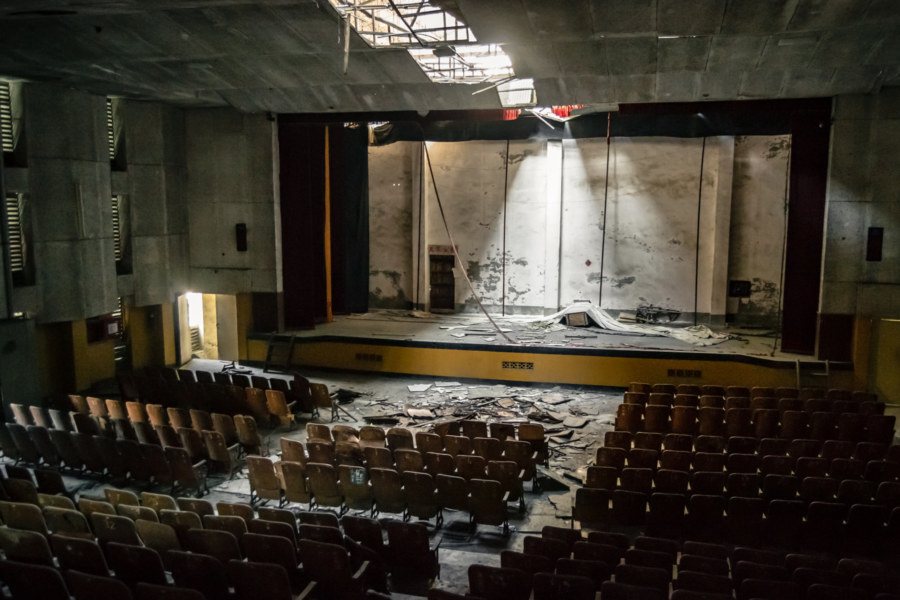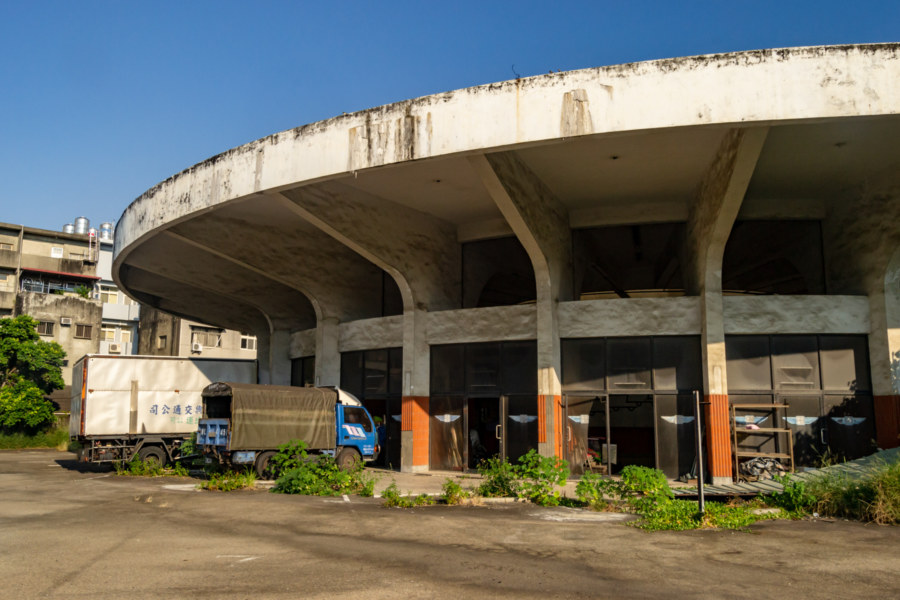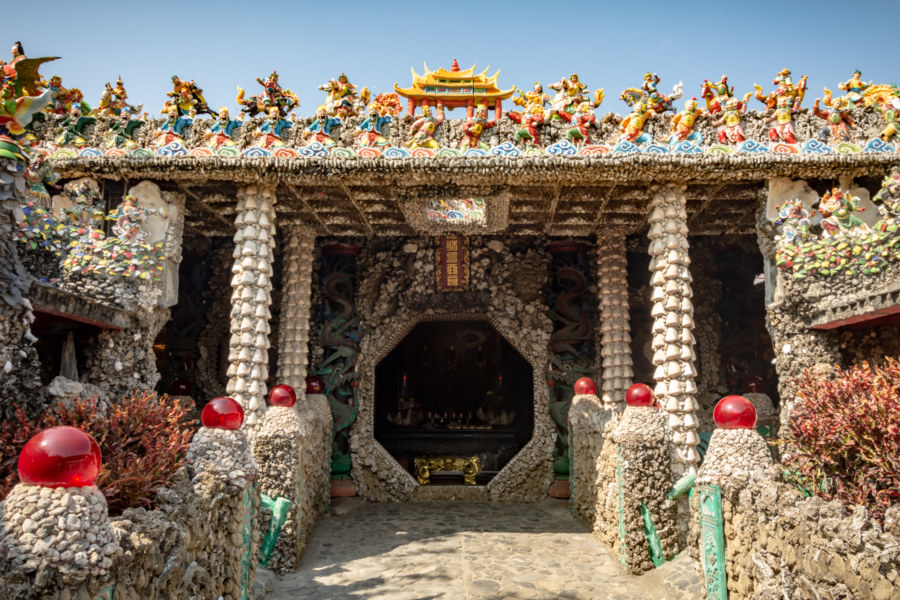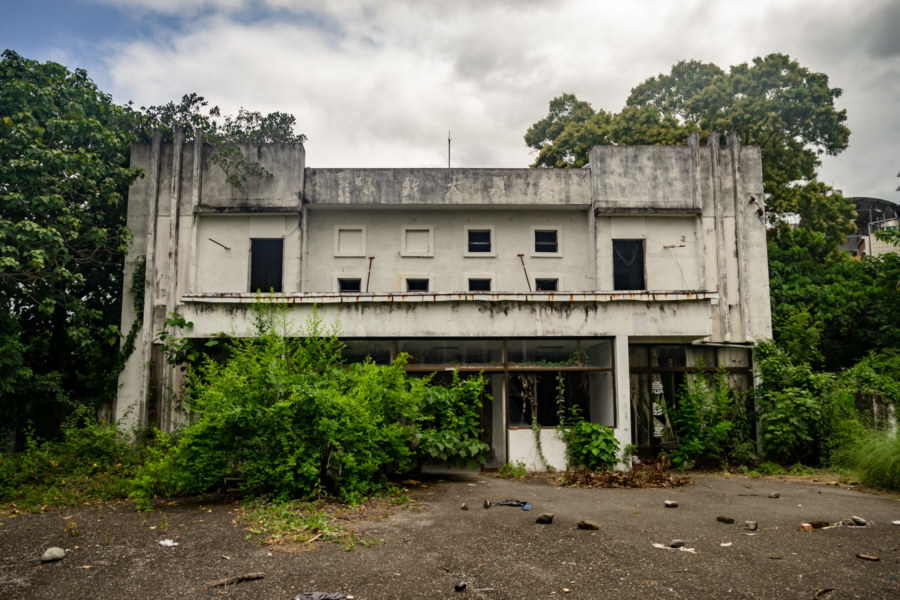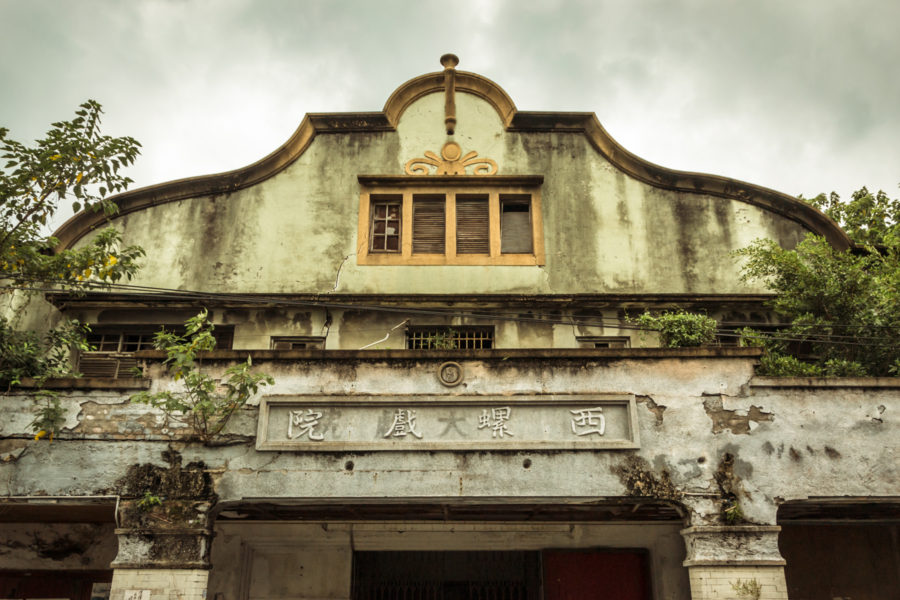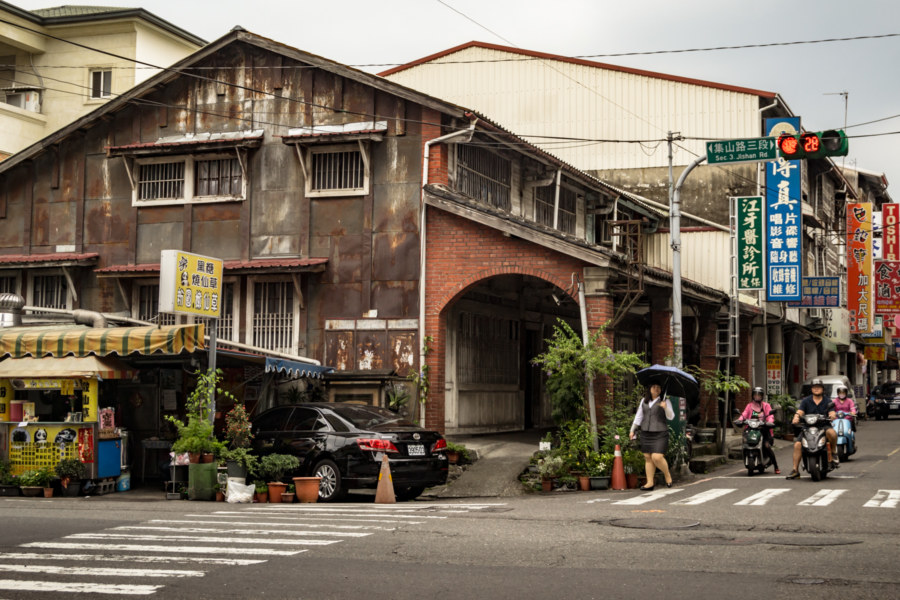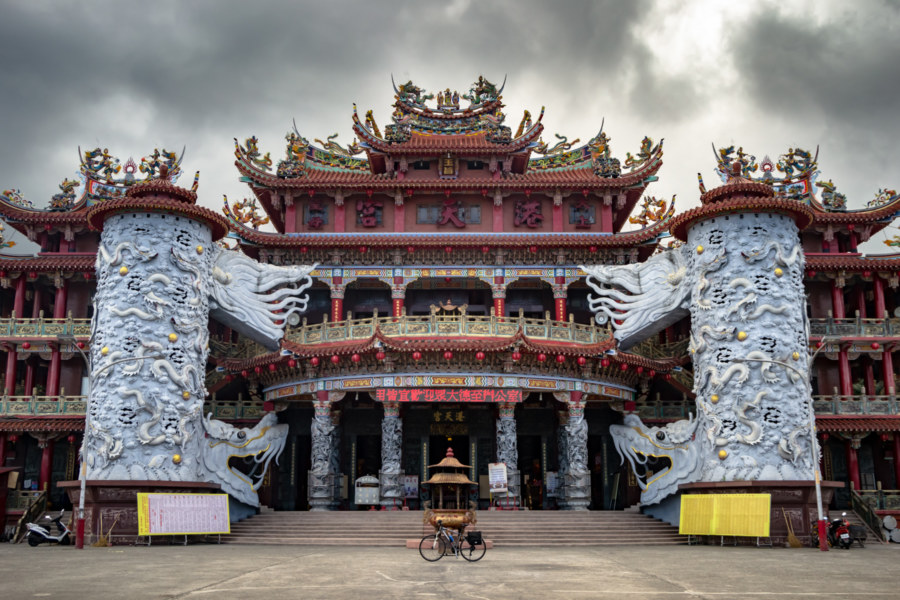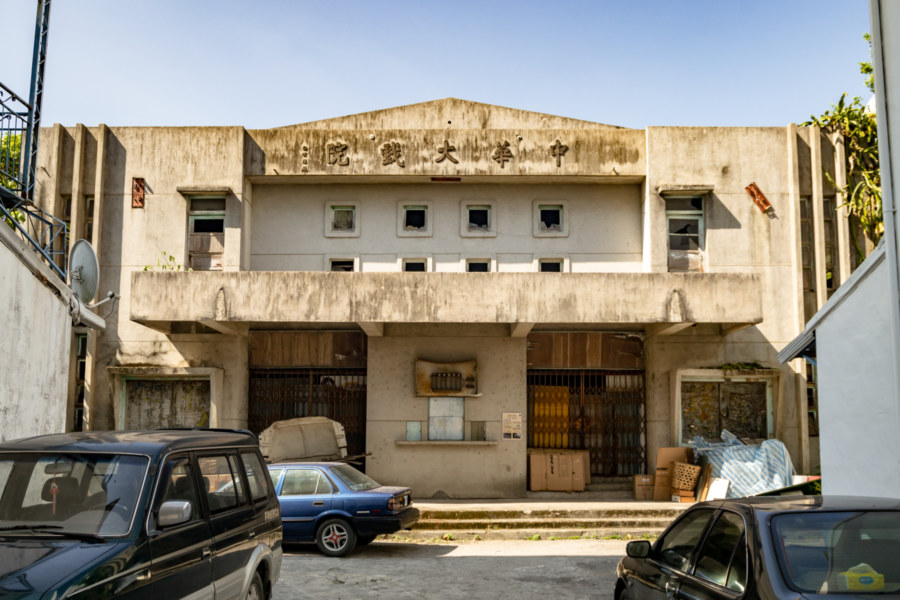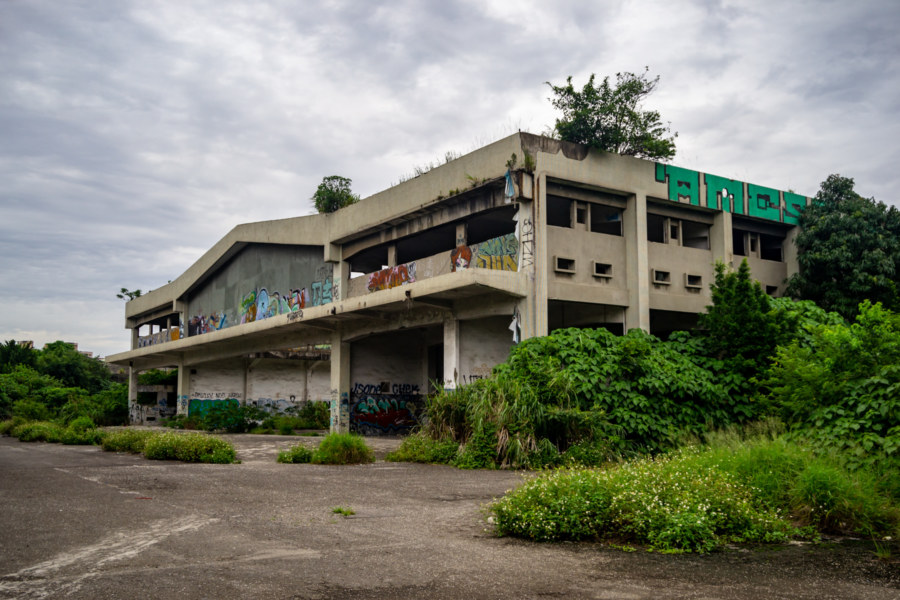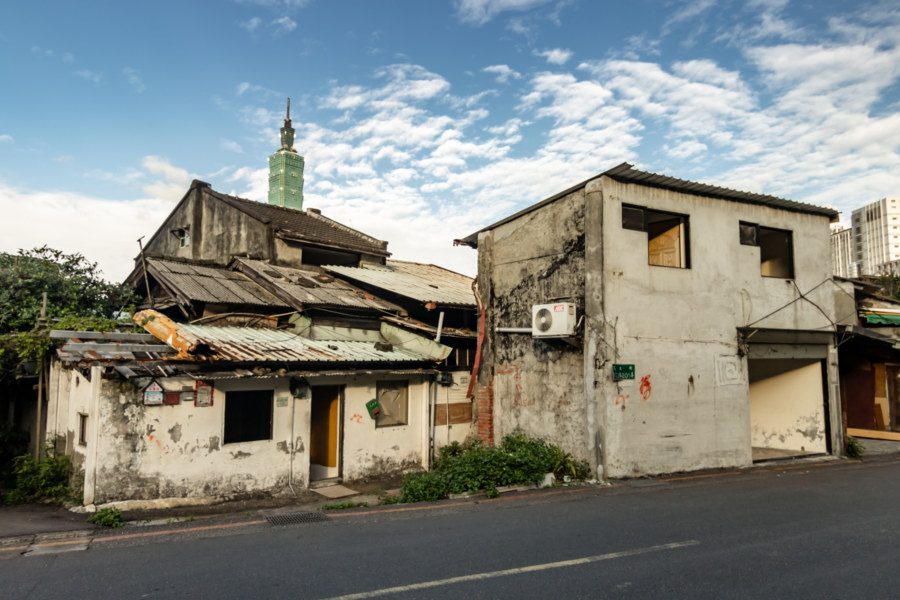Zhōngyāng Theater (中央戲院) is located in Guanmiao, a rural district in southern Tainan home to slightly less than 35,000 residents. The name is derived from a nearby street and simply means Central Theater. It was constructed in 1969, a few short years after an open-air movie theater began showing films on this plot of land just east of the biggest market in town. As with many Taiwanese cinemas of its vintage, it was in business until the late 1980s before winding down, another casualty of changing consumer habits, the collapse of local industry, and rural flight. This year marks the 50th anniversary of Zhongyang Theater, a milestone recently observed by Guanmiao Youth (關廟青), a group of local activists hoping to revitalize their hometown. They were successful in generating some some positive news coverage of the occasion, and now that this theater is in the news, I figure I may as well share my findings from several visits to the site over the last four years.
Changhua Bus Terminal 台汽客運彰化總站
Taiwan Motor Transport Company 台灣汽車客運公司 (or simply Táiqì 台汽) was a state-owned enterprise founded in 1980, partly to take advantage of the newly-completed National Freeway 1 國道一號 running along the western coast of Taiwan from Keelung to Kaohsiung. Considerable investments were made into an extensive fleet of vehicles, more than two dozen bus stations, and a massive maintenance depot (previously documented on this blog). Despite enjoying a monopoly on long distance, intercity coach travel, the company struggled to remain profitable in its first decade of operations—and when the market was deregulated and opened to competition in the early 1990s, its fate was sealed. After incurring another decade of losses Taiqi was privatized in 2001 under the name Kuo-Kuang Motor Transport Company 國光汽車客運股份有限公司, which continues to operate today, albeit on a much smaller scale. One consequence of the downsizing that preceded privatization was the closure of the Changhua Bus Terminal in Changhua City, the administrative capital of Changhua. Today it remains derelict, a crumbling relic of the optimistic 1980s hidden in the laneways north of the central railway station.
Sanqing Sanyuan Temple 三清三元宮
Sānqīng Sānyuán Temple 三清三元宮 is an unusual attraction in Fuxing, immediately to the south of Lukang in Changhua, Taiwan. It was constructed over the course of nearly two decades by Huang Chi-Chun 黃奇春, a former soldier who moved here in the late 1970s. This otherwise modest structure is adorned with thousands of seashells, pieces of coral, and other oceanic oddments—which is why it is more commonly known as the Changhua Shell Temple 彰化貝殼廟.
Dongxing Theater 東興大戲院
Dōngxìng Theater (東興大戲院) is located in a small village in the outskirts of Taitung City, Taitung, at the southernmost extent of the Huadong Valley (花東縱谷). Not much is known about its history beyond whatever can be deduced by visiting the site, but it was almost certainly built in the late 1960s, around the same time as Jinxing Theater, located just down the street, and Zhonghua Theater in Guanshan, which has almost the same design. At some point it went out of business, probably in the 1980s, and was converted into a small rural hospital, a repurposing I’ve seen nowhere else in Taiwan.
Xiluo Theater 西螺大戲院
Xiluo Theater (西螺大戲院) is perhaps the most widely-known of the many abandoned theaters of Taiwan. It is located just off the main commercial street running through Xiluo, a small city of approximately 46,000 residents on the south bank of the Zhuóshuǐ River (濁水溪), the traditional boundary dividing northern and southern Taiwan. Completed sometime between 1937 and 1940, this reinforced concrete and brick building replaced a wooden theater originally built in the 1920s. The new theater survived the war unscathed and flourished during the golden age of Taiwanese cinema in the 1950s and 60s. In those days the area surrounding the theater became known as Xiluo’s Xīméntīng (西門町), a name derived from Taipei’s popular entertainment district. Business declined sharply in the early 1980s and the theater was abandoned to the elements by 1988, a consequence of changing consumer habits, the rise of television and home video, and population outflow to larger cities. More recently it has become a popular site for photography, video production, urban exploration, and historical tourism.
Postcards From Zhushan 竹山明信片
Zhushan (literally “Bamboo Mountain”) is a historic yet obscure township in southwestern Nantou mainly known for cultivating tea and bamboo. The town itself is one of the oldest in central Taiwan but it hardly feels that way. Many of Zhushan’s most historic structures were destroyed or damaged beyond repair in the devastating 921 Earthquake that struck in 1999, which is why its “old street” is lined with modern buildings. Most travellers pass through Zhushan on the way to attractions deeper into the rugged interior of Taiwan without sparing it a second glance—but I stopped for a closer look in the summer of 2017 while on an impromptu road trip. After staying the night in a sleazy love motel never meant for sleep (there was no way to switch off the lights) I wandered around in the morning haze, capturing traces of Zhushan’s history as it disappears into memory.
Huadong Valley Ride 2018: Hualien City
In May 2018 I embarked on a multi-day bicycle trip along the majestic Huādōng Valley (花東縱谷) of Taiwan from Hualien City to Taitung City. Although I had previously cycled parts of this valley during my full tour of the island in 2013 I did so without really knowing what was there—and after five years I amassed quite a collection of notes about places I was interested in seeing up close. Several themes emerged while preparing for this trip: old standalone movie theaters, of which I had located more than a dozen; derelict railway infrastructure including stations, military checkpoints, and abandoned lines; and relics of the Japanese colonial era, particularly former Shinto shrines. This post documents my first day of riding, which only began in the late afternoon after arriving by rail at Hualien Station. I had shipped my bike ahead so all I had to do was pick it up from the baggage room, throw the panniers on, and start riding.
Guanshan Zhonghua Theater 中華大戲院
Zhōnghuá Theater (中華大戲院) is an impressive KMT authoritarian era ruin in Guanshan, a small town of approximately 8,800 in the idyllic Huadong Valley of Taiwan. With seating for 1,200 patrons it was the largest theater in Taitung when it opened in 1965, and it soon earned the title “northern tyrant” (běibàtiān 北霸天) for dominating the cinema industry at this end of the county. What explains the existence of such a huge theater in this remote, sparsely populated place? As with the more modest and folksy Wǔzhōu Theater (五洲戲院) in neighbouring Chishang, a closer examination of regional socioeconomic history provides answers.
Taiwan Motor Transport Maintenance Depot 台灣汽車客運公司機料廠
Shulin is a heavily industrialized district of approximately 185,000 residents on the southwestern periphery of Taipei. Until recently it was home to one of the most well-known large-scale ruins in the metropolitan area: the former Taiwan Motor Transport Maintenance Depot (台灣汽車客運公司機料廠), more generally known as the Shulin Factory. This abandonment was far from secret—it was regularly used for photo and video production, airsoft and paintball games, flying drones, practicing graffiti and street art, and the occasional underground techno party. It was so popular, in fact, that it attracted several con artists who impersonated security guards and the property owner to charge a fee for usage of the site, occasionally extorting large sums from more professional operations, which eventually led to their arrest. As for the history of the site itself, Tobias at Only Forward has published an extremely thorough account of this ruin, and I don’t have very much to add apart from my own original photos from two separate visits to the now-vanished site.
A Nameless Community in Xinyi District
Xinyi is among the richest and most expensive parts of Taiwan—but it hasn’t always been this way. Decades ago it was sparsely settled and far more industrialized, particularly around Wúxìng Street (吳興街), where I lived for several years in the late 2010s. This part of the city was once anchored by an immense army maintenance depot previously mentioned in this post, but the entire complex was demolished in the early 2010s, replaced by parking lots, basketball courts, and wide open fields. The former depot was surrounded by several military villages, all of which were also dismantled apart from the grim concrete apartment blocks of Wúxìng New Village (吳興新村) and, somewhat further north, the restored and revitalized #44 South Village (四四南村) across from Taipei 101.
Until recently there was also a cluster of what were probably illegal houses on the southern periphery of the former army depot. Nestled into a tiny patch of land next to the mountains and jutting into the factory grounds, this community was demolished in early 2017, but not before I made several visits to document its disappearance. There is nothing particularly noteworthy or unusual about this small community—and indeed, I can find no information about it whatsoever. This post serves only to document a nameless, unremarkable place, one of thousands disappearing into memory all across Taiwan.
